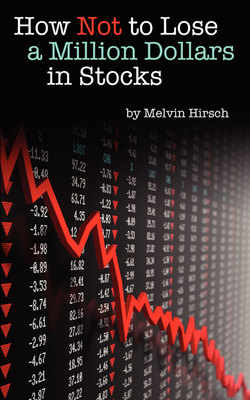Читать книгу How Not to Lose a Million Dollars in Stocks - Melvin Hirsch - Страница 7
На сайте Литреса книга снята с продажи.
ОглавлениеInvest for the Long Term
Don’t worry if your investment is going down; invest for the long term. I am sure you have heard that bit of advice in various forms from numerous sources. Well, let’s look at reality to see what happens in the long term.
Look at a 10 year picture of the Dow Jones:
Chart courtesy of TeleChart – www.orden.com
On December 27, 1999 the Dow Jones Industrial Average was 11,391. On December 28, 2009– 10 years later the Dow Jones Industrial Average was 10,547. Thus, if you owned a portfolio of stocks equivalent to those in the Dow Jones Industrial average, after a period of 10 years you would have lost 7%. However, probably a more typical scenario for the average investor during this 10 year period is that having invested on Dec. 27, 1999, at which time the market looked stable with excellent potential for advances, the investor listened to the pundits “hold for the long term”. The investor then watched in distress as the market proceeded downhill expecting at any moment a recovery. Finally, after watching the market fall in disgust and terror the investor sells on October 9, 2002 with the Dow at 7,755 – a loss of 2,792 Dow points equal to 26%. Now, the investor watches the market rise, day after day, week after week. After steadily climbing the investor buys back into the market on December 2, 2002 with the Dow at 8,862 hoping to recover all losses. The Dow levels out and after a month then again starts declining. The investor holds and holds and holds sure that he can recover this time. Finally on March 13, 2003, he throws in the towel and sells with the Dow at 7,821 a loss of 1,041 Dow points, another loss of 12%. Having lost 38% of his original investment he now watches very cautiously as the Dow rises back to 14,164 on October 9, 2007. Finally, hoping to recover his losses he buys back into the market and holds as it again collapses; finally selling when the Dow is at 6,627 on March 6, 2009; a loss of 53%. Adding up all the cycle losses, the investor lost 91% of his money.
Thus, if the investor held for the entire ten year period he would be down 7%; but another possible scenario is a loss of 91% as the investor dutifully held as the market declined hoping each time for a recovery; selling at the bottom of a down cycle. After each period of rising prices, the investor again is enticed to invest hoping to recover his losses and again the cycle is repeated, finally selling in total frustration and despair. At that point the market again turns up. Far fetched, maybe a bit, but variations of this are very likely as the normal psychology is to buy when a market has been rising and then to hold when it declines hoping to recover losses.
This is normal psychological behavior, bouncing between Fear and Greed. It is the type of psychological behavior that causes market swings. Understanding the cause and effect is essential to profiting from market cycles and using them for successful trading. The concept of “buy and hold for the long term” has to be put to rest. Maybe there was a time when that philosophy could work but in today’s fast moving markets that type of thinking does not work.
Individual stock patterns will overall mimic the averages, but the cycle swings of every stock are individual, they may be greater, lesser or out of synch with the overall market averages. Careful analysis can produce profits in up and down swings which may exceed the overall market cycle swings.
